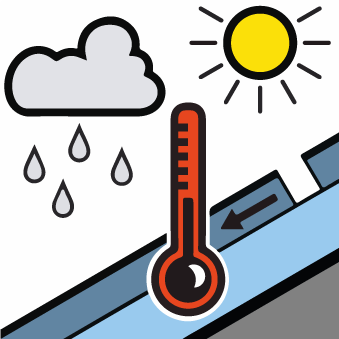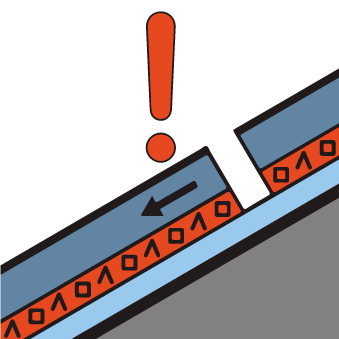
Danger level
 |
|  |
|  |

The danger of wet and gliding avalanches will increase during the day, reaching danger level 4 (high). As a consequence of warming during the day and the solar radiation, the likelihood of wet avalanches being released will increase significantly in particular on steep slopes below the tree line. The surface of the snowpack is hardly frozen at all and will already soften in the late morning. A clear night will be followed in the early morning by quite favourable conditions generally, but the danger of wet and gliding avalanches will increase later. During the morning as well, individual, then as the precipitation becomes heavier more wet avalanches are to be expected. On steep southeast, south and southwest facing slopes and at low and intermediate altitudes numerous medium-sized and large natural wet avalanches are to be expected as a consequence of warming. On sunny slopes a high danger of wet and gliding avalanches will be encountered over a wide area. As the temperature drops there will be a gradual decrease in the avalanche danger towards the evening.
The danger of wet and gliding avalanches will increase during the day, reaching danger level 4 (high). As a consequence of warming during the day and the solar radiation, the likelihood of wet avalanches being released will increase significantly in particular on steep slopes below the tree line. The surface of the snowpack is hardly frozen at all and will already soften in the late morning. A clear night will be followed in the early morning by quite favourable conditions generally, but the danger of wet and gliding avalanches will increase later. During the morning as well, individual, then as the precipitation becomes heavier more wet avalanches are to be expected. On steep southeast, south and southwest facing slopes and at low and intermediate altitudes numerous medium-sized and large natural wet avalanches are to be expected as a consequence of warming. On sunny slopes a high danger of wet and gliding avalanches will be encountered over a wide area. As the temperature drops there will be a gradual decrease in the avalanche danger towards the evening.
Snowpack
dp.3: rain
dp.2: gliding snow
As a consequence of sharply rising temperatures and rain up to high altitudes a critical avalanche situation will develop. The old snowpack is faceted and weak. The rain will give rise to extreme and thorough wetting of the snowpack in all aspects below approximately 2400 m. These conditions will cause a very rapid weakening of the snowpack.
The snowpack is moist and its surface has a melt-freeze crust that is strong in many cases. This applies in particular on steep sunny slopes above the tree line. The surface of the snowpack will soften during the day. Sunshine and high temperatures will give rise as the day progresses to a loss of strength within the snowpack over a wide area in particular on very steep sunny slopes.





